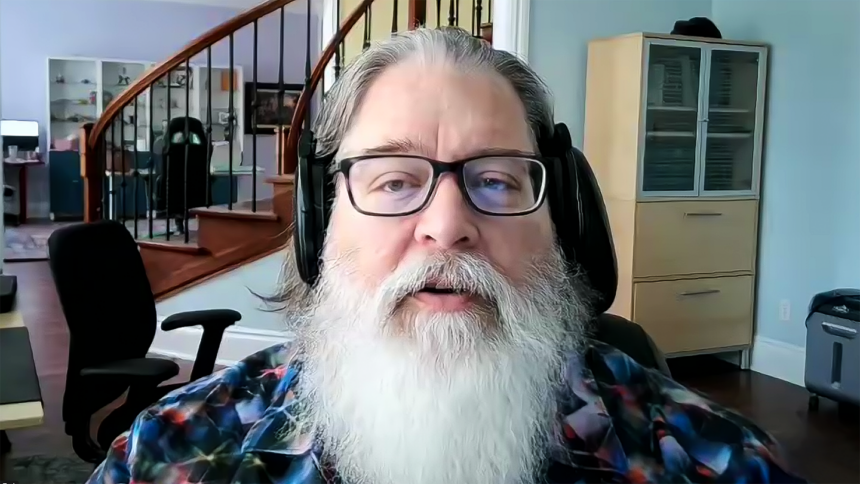
Federal and state regulators should require consolidated, audited financial reporting of every nursing home group in the country to get beyond the “smoke and mirrors” and better understand exactly how much owners are making, a consumer attorney and financial auditor said Tuesday.
Ernest Tosh runs a national “bedsore” litigation firm and frequently testifies to forensic accounting details during civil trials pinning nursing homes with charges of inadequate care. Tuesday, he trained his targets on cost reporting and ownership transparency in a webinar titled, “Behind Closed Books: How Hidden Profits Harm Nursing Home Residents.”
The current financial reporting system allows nursing homes “to claim they’re losing money, when in fact, they’re making massive amounts of profit,” said Tosh, who has also testified before Congress on nursing home issues and worked with the Long-Term Care Community Coalition and other consumer advocacy groups to advance stringent new regulations for nursing homes.
Hundreds of nursing homes across the nation have closed in the last two years, many citing lagging Medicaid reimbursement rates and the inability to afford rising staffing costs. In some states, they’ve agreed to more ownership transparency and staffing and spending rules in exchange for substantial Medicaid rate increases.
But Tosh argued that nursing homes continue to “manipulate” their books through the use of related party and inflated ancillary business expenses as a way of supporting claims of financial hardship and “explaining away” insufficient staffing.
Tosh, who takes only nursing home cases, also said that appearing to be in the red year after year also allows nursing homes with deep pockets to avoid some civil lawsuits because plaintiffs’ attorneys might believe a facility can afford to pay out only what’s covered by its insurance policy.
During his presentation, Tosh demonstrated how nursing homes could inflate expenses by selling their real estate to a shared owner, then paying rent on the building to a real estate holding company. He said management firms run by shared owners were another common method of driving up costs, with all profits going back to the same corporate overlord but out of the reach of cost reporting.
While the related party model has come under fire, it’s unclear exactly how many nursing homes might be abusing the system. Tosh alleged Tuesday that “almost all” have gone that way since the concept became widely understood in 2004.
But the Centers for Medicare & Medicaid Services has been working to improve its insight into such arrangements, including with a new ownership-transparency rule finalized last week. That requires providers to report any related parties they do business with at certification or point-of-sale, and it also requires more in-depth reporting of all ownership entities or investors.
Many nursing home organizations have supported those new rules as a way to make ownership information more discernible to the public, and to better understand how provider type might affect quality of care.
Tosh said they don’t go far enough because CMS examines only the base layer of ownership and doesn’t reveal which organizations and individuals are reaping profits across massive multisite chains with complicated structures. He also criticized CMS for failing to audit the information it already collects, calling some submissions “complete garbage.”
He said regulators need to adopt more stringent standards overseen by outside accountants. Such reporting requirements could draw lines between buildings and corporate structures, showing when money is moved from “one pocket to another.”
“In suggesting nursing homes are secretly goldmines, and even dissembling about nonprofit facilities too, Mr. Tosh is effectively accusing MedPAC of lying in its own unbiased assessment of the precariousness of nursing home finances absent Medicare payments,” Brendan Williams, a fellow attorney and president and CEO of the New Hampshire Health Care Association, told McKnight’s Long-Term Care News in an email Tuesday afternoon.
In some of his more inflammatory comments, Tosh said that many nonprofit nursing homes don’t break their organizations up to the same extent but many still funnel proceeds to trustees of higher-up real estate holding or management companies. He argued that the “true”nonprofits could be identified by their staffing patterns, despite the fact that many nonprofits have been forced to merge, sell or close over the last several years as a result of unsustainable reimbursement gaps or an inability to staff consistently.
Tosh also insisted that few nursing homes would go bankrupt, limit access or close in response to a proposed federal staffing mandate, as provider groups have cautioned. He did, however, concede that was a likely scenario in rural locations.
“Rural nursing homes are going to close. That’s true,” he said. “But the reality is, the vast majority of us don’t live in rural areas. And the reason that these nursing homes are closing is because more and more people are moving away from rural areas. And so there is not a need for those nursing homes.”
Those comments were especially egregious to Williams.
“Representing a rural state, I resent Mr. Tosh’s callous disregard for rural nursing home closures. We can’t all live off lawsuits,” Williams said. “While I respect the role the plaintiff’s bar can play in accountability, there’s a difference between that and openly rooting for nursing home deprivation and failures to make them soft targets for one’s personal profit.”




